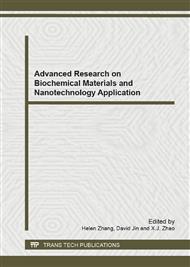p.120
p.127
p.131
p.135
p.139
p.144
p.149
p.153
p.157
Research on Lubrication Behaviors of Nano-TiO2 in Water-Based Hot Rolling Liquid
Abstract:
In this paper, nano-TiO2 particles with an average size of smaller than 25 nm, were stable dispersion to water-based hot rolling liquid for steel strip under the effects of dispersant and ultrasonic. The stability of the rolling liquid with nano-TiO2 was characterized by sedimentation method. The tribological properties of the hot-rolling liquid doped with nano-TiO2 were evaluated by using a universal friction and wear tester. Besides, the lubricity of the water-based hot rolling liquid doped with nano-TiO2 for steel strip was evaluated on a hot-rolling tester by using the rolling liquid without nano-TiO2 for comparison. Results indicate that TiO2 Nano-particles as additive are stable dispersion to hot-rolling liquid with appropriate dispersant and process for more than 7 days, also have good friction-reducing, anti-wear, and cooling properties.
Info:
Periodical:
Pages:
139-143
Citation:
Online since:
January 2013
Authors:
Keywords:
Price:
Сopyright:
© 2013 Trans Tech Publications Ltd. All Rights Reserved
Share:
Citation:


